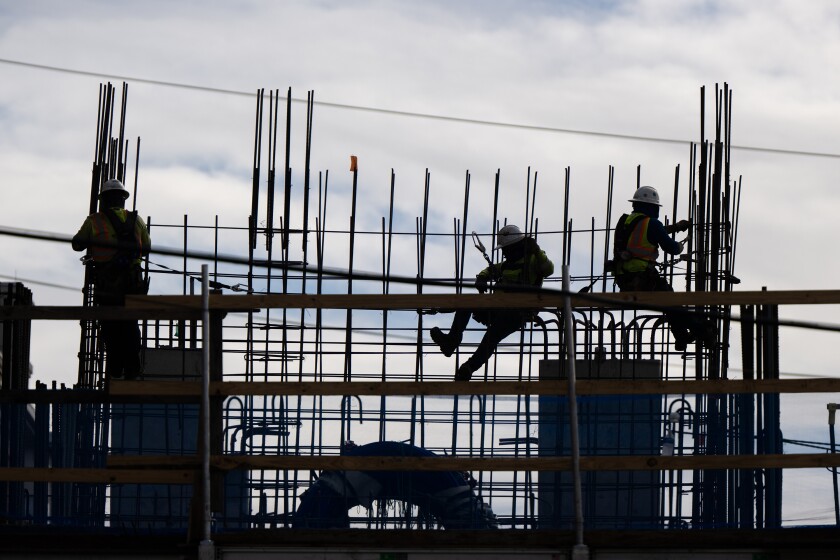With heat indexes regularly exceeding the triple-digit mark this summer, the Dallas-based contractor is piloting a program to cut down on heat-related injuries and deaths. In the process, it’s tapping into technology that NASA and Boeing plan to use inan upcoming mission to send humans to space.
At a Rogers-O’Brien construction site at Southern Methodist University, workers are wearing sensors on their arms that continuously monitor heart rate, body temperature and other biometric indicators. If the sensor detects an alarming reading over a period of time, it notifies the worker wearing the sensor and a safety supervisor.
The sensors are connected to a software called SafeGuard.
“We’ve known for years about heat illness, but training only gets us to a certain level,” said Ross Daly, director of safety at Rogers-O’Brien. “This technology allows us to go a step further and monitor each other to be more proactive and not wait to start feeling sick to act.”
In 2022, Texassaw the most heat-related deathssince 1999, with high temperatures claiming the lives of nearly 300 people in the state. A recent heat wave was blamed for 13 deaths in Texas.
Sentinel Occupational Safety Inc., the team behind the SafeGuard technology, is using 10 workers at the SMU worksite to test the sensors and software. Daly said the company ordered another 60 of the wearables and expects 90 percent of its hourly employees to be equipped with them. The wearables won’t be mandatory, however.
Rogers-O’Brien uses the Polar Verity Sense band and Garmin watches. Polar’s device costs between $80 and $100 while Garmin’s run $150 to $300. The company pays an undisclosed monthly fee to use SafeGuard’s technology on the devices.
In early June, Tyler Hughes, a worker at the SMU construction site, said his monitor detected signs of an unusually high heart rate, which turned out to be an underlying health condition.
“I couldn’t really feel anything. But then I went to the doctor, and they wanted me to lose some weight and stop drinking energy drinks. Which has helped a lot,” Hughes said. “It really opened my eyes.”
As the technology detects alarming readings, it changes the color of a category, such as heart rate, to yellow or red to indicate the level of danger. An alert is then sent to the safety supervisor’s phone.
Lance Manning, vice president of growth and strategy for Sentinel, said yellow and red indicate that a worker should take a break.
Not all workers are like Hughes and some have refused to wear the technology, said Seth Campbell, safety supervisor at the SMU worksite.
“Some people are just old school and don’t want to wear them. They feel like they’re being watched or something of that nature,” Campbell said. “It’s not the case at all, but we understand their concerns.”
Manning said he hopes the company’s prior experience will convince workers to wear the technology.
“It’s not a heavy-handed approach. It’s more of an opt-in thing,” Manning said. “We take data privacy very seriously. We’ve tested this with the military and their standards of data shareability. So we look at this more like a lifestyle change.”
Texas Gov. Greg Abbott recently overrode city laws that required employers to give construction workers water and heat breaks every four hours. Daly said Abbott’s action wasn’t a factor in Rogers-O’Brien’s decision because it started using the wearables in April.
SafeGuard advocates want other construction companies to adopt the technology as an added safety measure.
“It paid for itself because it caught an underlying issue that we can get ahead of,” Campbell said. “This is the next step for safety and technology.”
NASA and Boeing contracted with SafeGuard for the recently delayed Starliner mission to provide real-time health and safety data for the landing and recovery team. Boeing last month indefinitely delayed the mission that would have sent two NASA astronauts to the International Space Station this week.
©2023 The Dallas Morning News. Distributed by Tribune Content Agency, LLC.











